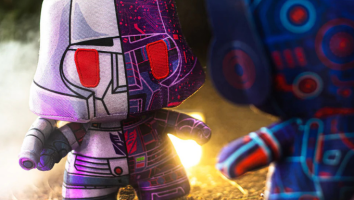New York-based Net reasearch company eMarketer estimates that in 1999, 35% of teens on-line (about four million in total) will make at least one Internet buy. By 2002, that number is projected to more than double to 10.3 million (about 67%). But attracting teens to a site and making it interesting enough for them to keep coming back is a major challenge facing e-marketers. The teen sticky factor is one of the most crucial elements in getting a percentage of the teen on-line dollar, and pioneering e-tailers are experimenting with different models for nabbing a loyal teen customer base.
Hoping to make a personal connection with girl surfers ages 13 to 19, California-based clothing company Wet Seal commissioned New York’s Integrated Communications and Entertainment (ICE) to design a graphic-based hook for the Wet Seal Web site (http://www.blueasphalt.com). ‘There are a lot of players on the Net, but all of them are pretty much straight catalogs with peripheral things like e-mail, chats and horoscopes,’ says Steph Sebbagg, ICE’s senior account manager. ‘Usually a home page is text-based, but we wanted to go a step further than that.’
What emerged on August 1 was Phoebe, a virtual host that teens can interact with in the environment of her bedroom. ‘You can search the room and find a phone,’ Sebbagg explains. ‘You click on that to access the chat function-so it’s more like a game,’ he says. Phoebe shows teens her fave CDs and visitors can also check out her clothes, shop, e-mail, chat and read a `zine.
According to Sebbagg, it cost upwards of US$1 million to build the host-driven site, but the expenditure started to pay off almost immediately. Garnering about US$5,000 a day in its first two weeks, http://www.blueasphalt.com averages around 96,000 visitors per week. The site’s ultimate goal is to build Wet Seal’s e-commerce while attracting visitors to the company’s 539 U.S. stores and increasing interest in the Wet Seal catalog. ‘We like to call it clicks-and-mortar convergence,’ quips Sebbagg. ‘People may need to go buy something in person because they aren’t comfortable buying on-line. In that case, the Web site is a marketing tool, where people can pre-shop.’ Catalog shoppers, on the other hand, may want a more interactive shopping experience, Sebbagg says, and can look up merchandise on the Web site and order on-line, if they want the product to arrive more quickly.
L.A.-based e-commerce portal PlanetGirl.com incorporates community-building components like a weekly e-mail newsletter and an e-card service to attract teen girls to its site (http://www.PlanetGirl.com). ‘Every study that we’ve done says the significant difference between girls and boys on-line is that girls want to use communication tools and boys want to surf and download,’ says president Nancie Martin. ‘Girls check their e-mails at least daily. They want to chat, they want to communicate, and that’s why we have employed these elements on the site.’ In the Ultimate Closet, girls can put together a fetching ensemble and e-mail it to their friends for an almost-mall experience that includes an array of 75 retailers, including Styleclick.com, dELIAs.cOm and MP3.com.
Toronto, Canada-based e-com portal Norstarmall.ca is gearing up to attract teens to its 3-D mall with entertainment goodies like sneak peeks at upcoming movies and an on-line arcade, where beta versions of yet-to-be-released games will be showcased. ‘If teens know beta versions of games are there, they will be there every day,’ says CEO Paul Romanchuk.
New to the digital landscape, the Canadian company launched its 3-D mall featuring 27 Canadian retailers (including Holt Renfrew and Roots) in October, and plans to debut a U.S. counterpart in Q2 2000. Norstarmall is currently negotiating with a theater chain partner to provide trailers and other film content.





















